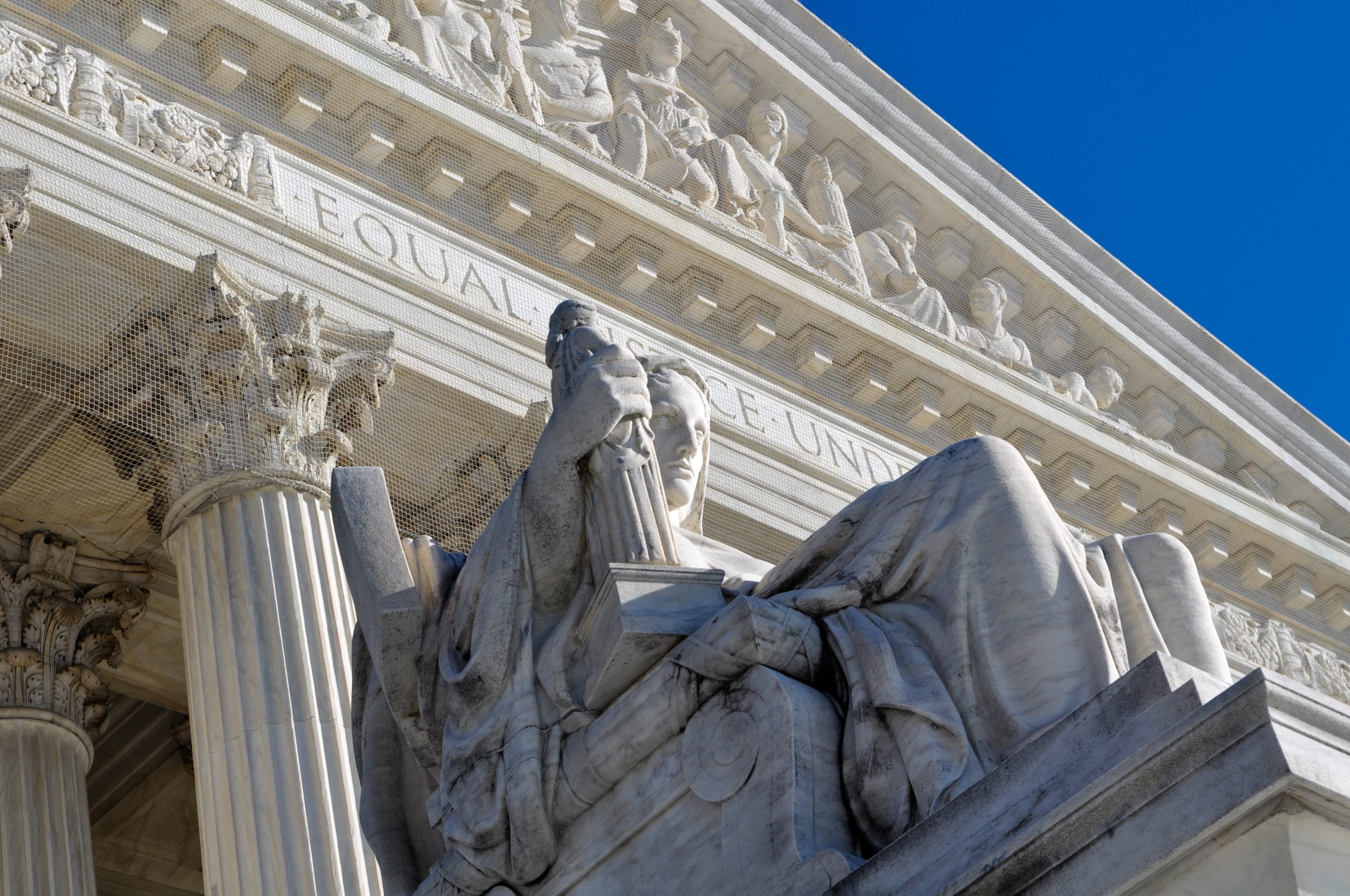In Americans for Prosperity Foundation v. Bonta, the Supreme Court misses an opportunity.
Constitutional Imagination in the “Long Founding”
Alison LaCroix’s new book, The Interbellum Constitution, challenges how we understand American constitutional history between 1815 and 1860. Most historians interpret the period as a power struggle between federal and state power. LaCroix, on the other hand, discerns in the era a multifaceted system of “federalisms” in which federal, state, and local governments engaged in two persistent debates. The first revolved around defining and determining the meaning of the Constitution. The second debate concerned who was responsible for policing the boundaries in this overlapping system of jurisdictions. By elucidating these debates, LaCroix proves that interbellum Americans deserve more credit for their remarkable constitutional imagination.
This fluid system of “federalisms” centered on the extent to which the Constitution embraced the idea of imperium-in-imperio, or “multiple, overlapping governments.” Answering that issue engaged all levels of government, as each haggled at different times and at various governmental levels over the proper jurisdictional boundaries of their authority. In some instances, state authority clashed with the federal; in others, the local governments clashed with state authority or sometimes federal power. Nor did these discussions automatically lead to open constitutional confrontations. Instead, these various authorities negotiated about how power would operate. Rather than a zero-sum game, this system of “federalisms” was one in which positions shifted depending on the context of the situation. Moreover, this give-and-take amongst various governmental levels disrupts the standard “binary” (a word she uses frequently) that pits the states against federal power.
To demonstrate this system of competing “federalisms,” LaCroix moves past the conventional approach focused exclusively on case law and judicial doctrines. Some of that traditional approach is in the book—it is impossible to avoid it altogether—but she contends that written judicial opinions were not the primary source for much of the creative constitutionalism that marked the period. Rather, it flowed from the pens and words of lawyers, concerned citizens, and civic groups. Accordingly, she resurrects long-neglected or forgotten figures such as William Wirt, the longest-serving US Attorney General in American history; William Johnson, one of Jefferson’s Supreme Court appointments; and Maria Henrietta Pinckney, the politically active daughter of Carolina Federalist Charles Cotesworth Pinckney. While these less-famous personages do not cast as long a shadow as Madison, Clay, Calhoun, Jackson, or Marshall, LaCroix convincingly demonstrates that they not only enrich our understanding of the constitutional history of the era but deserve credit for driving constitutional discourse. Many of the grand pronouncements and doctrines found in the period’s high politics and court opinions were frequently restatements of these people or groups.
For LaCroix, commerce served as the “crucible” underpinning the complexity of these multiple “federalisms.” By 1815, practically all Americans had accepted that the United States was a “commercial republic,” but little consensus existed over what that meant practically. Since economic activity occurred at the local, state, national, and international levels, with interactions frequently overlapping these jurisdictions, Americans of the interbellum period had little choice but to hash out questions about the boundaries of concurrent jurisdiction. LaCroix contends that this desire to establish who held superintendency over commerce “consumed” Americans and fueled the move towards the numerous federalisms central to LaCroix’s argument.
While most twenty-first-century Americans might believe that the Constitution clearly answered the question of who held superintending power over commerce, LaCroix rejects that notion. As early as 1815, the Constitution’s “fragile and underspecified agreements about the distribution of power between the nation and states” proved “increasingly inadequate to the formidable task” of providing a definitive answer to the jurisdictional problems posed by an emerging system of bustling commerce. Hence, the work and argumentation done by Wirt and Marshall in cases such as US v. Brig Wilson and the more famous Gibbons v. Ogden created important precedents that provided meaning and guidance.
As crucial as those precedents were, they did not settle the question of who held the power to oversee this fluid system of federalism. The question persisted because any answer also inexorably required it to address the nature of the union. If the meaning of commerce seemed challenging to parse, that proved doubly true for addressing this question that was older than the Constitution and one that the Founding glossed over.
LaCroix identifies three competing understandings of the union during the interbellum period. One was the nationalist view, which maintained that superintendent power rested exclusively with the general government, its supremacy clause, and the Supreme Court. This view, while undoubtedly present and held by luminaries such as Joseph Story, John Marshall, and Daniel Webster, was by no means the majority view, despite receiving considerable authority with cases such as Martin v. Hunter Lessee and Gibbons.
Competing with this nationalist vision was the idea that the individual states held the superintending power. Dating back to the Kentucky and Virginia Resolutions, this view gained renewed prominence during the Nullification Crisis and through the arguments of John C. Calhoun and Maria Pinckney. It maintained that the Constitution was an agreement between sovereign states. As such, the general government and its powers were (to quote Pinckney) the “Servants” of the “Masters – The States.”
We—just like the generations of the interbellum period—are the Constitution’s inheritors, not its craftsmen.
The third view, advanced by Justice William Johnson and best expressed by him in the critical 1824 federal district court case of Elkison v. Deliesseline, argued for a tripartite Union consisting of the people, the states, and the federal government. Although LaCroix does not detail this third position as well as the other two, it embraced the “overall system established by the Constitution” but considered the Supreme Court as an institution charged with balancing and overseeing competing claims of authority.
These disputes over commerce and union were often tied to the issue of slavery, and it is here where LaCroix’s argument for “many federalisms” is at its strongest. Often, federal power protected or at least sidestepped the issue of slavery as Marshall did in his opinion in US vs. Brig Wilson. In other instances, such as the Elkins case, it declared a South Carolina law that prohibited black sailors from other countries from traveling in Charleston out of fear of instigating a slave uprising as a violation of the Constitution and commercial treaties. At the same time, and in the book’s best chapter, LaCroix demonstrates how Northern states resisted the federal protection of slavery in the 1850 Fugitive Slave Act. The attempts by many Northern states to essentially nullify the law culminated in the famous 1859 case of Ableman v. Booth. Although used for different purposes, this “federalism of jealous states” reflected the same arguments invoked by Madison, Jefferson, Calhoun, and Pinckney. From these examinations, it becomes abundantly clear that the traditional view of federal power as the defender of rights and state governments as the enabler of slavery is not just simplistic, it is simply wrong.
These constant negotiations about federalism throughout these decades meant that, by 1860, no complete consensus over the Constitution’s meaning existed. LaCroix is quick to point out that the “interbellum constitution” was not the one that won the Civil War. Instead, the process of constitutional interpretation continued—and, she implies, continues to this day. While the creativity found in the interbellum period has given way to a staid and rote singular federalism rooted in contests between federal and state power, there remains the generational imperative to continue debating the meaning and nature of the Constitution. Indeed, from reading The Interbellum Constitution, it seems the Constitution contains no meaning beyond what any contemporary age gives it.
Thus, for LaCroix, the Constitution of 1787 proved inadequate in addressing the demands of an emerging commercial republic. She repeatedly references “the fragile skein of the Constitution” or how the Constitution “smoothed over” messier issues about sovereignty and who held superintendent authority. This failure of the Constitution forced the next generation and every subsequent generation to determine those meanings for themselves.
If this is true, and if the Constitution proved inadequate just a generation after its adoption, it leads one to question the point of the Constitution in the first place. Was it designed only to guide the structural and mechanical operations of the general government? Did those who ratified it believe the Constitution to be a sandbox in which new players could shift the sands however they wanted?
LaCroix’s answers to these questions lay at the heart of the book. They are also unsatisfying. The Constitution contained meanings and intentions fixed at the time of its adoption. Its enumeration of powers was not an open-ended justification for the exercise of power. Although the Constitution did not and could not address every issue that might arise under it, the meaning of its powers at the time of its adoption guided how to answer those questions.
In other words, LaCroix wants to see the era as creating new definitions and meanings. She ignores how the actors she discusses were not trying to make something anew; instead, nearly all were trying to get right with the Founding. They sought to apply the meaning of the Constitution—of the Founders’ Constitution—to their situation. They did not consider the Constitution a failure but as the North Star guiding their political navigation. It is not incumbent upon each generation to create new meanings for the Constitution but rather apply its meaning to our world. We—just like the generations of the interbellum period—are its inheritors, not its craftsmen.
This leads to one other criticism: the historicity of the “multiple federalisms” framework. While the book convincingly demonstrates that disputes occurred throughout various levels of government, LaCroix’s desire to pluralize federalism is forced. She clearly wants to move scholarship away from the binary of federal versus state power, but that leads her to find plurality where it does not exist. In practically all her examples, the issue remained the balance of power between federal and state governments. The local issues that caused cases such as Elkison were still about state law against federal power. That is not multilayered federalisms; that is a binary—a binary that might have previously unnoticed tributaries but a binary nonetheless. What becomes clear in her book is less a constant state of negotiations but a creeping trend toward national power. In all her prominent examples, federal power won. While those successes might not have been complete or absolute, they were victories that increasingly made the federal government—the Supreme Court in particular—the undisputed superintending power.
Even with these criticisms, LaCroix’s Interbellum Constitution might be the most important constitutional history of the period ever written, revealing a vibrancy and complexity too overlooked. Anyone seeking to apply the constitutional history of 1815–60 now has considerably muddier waters to paddle through. The Interbellum Constitution is history done right.



